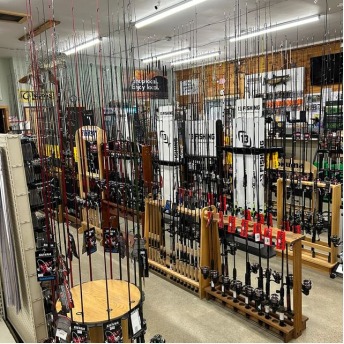For fishing enthusiasts, the most enjoyable part of fishing is its ability to double up as lucrative business. There are various equipment that are used to carry out fishing activities. Different fishing conditions call for different fishing equipment. For instance, ice fishing requires different fishing gear from inland fishing.
Fish is primarily sourced as food. One of the most important fishing equipment is the fishing bait. Also known as ‘’The fishing lures”, they are used to attract fish to your hook. A fishing bait should be compelling enough to the fish that the fish hardly notices the hook and line.
To understand how fishing baits work, it is important to understand the various types available in the market today, as explained in this article.
The Classifications of Fishing Baits
There are two major types of fishing baits, namely;
Artificial Bait/Fishing Lures
Fishing lures are artificial fish-attracting bait used to attract fish to your hook, mostly made of soft plastic material.
There are a lot of different fishing lures available in most fishing tackle shop, varying in shape, color, size, and design. The fishing lures are usually attached to the end of the fishing line and have a hook at the end. The fishing lure anglers are deigned to keep it in the perfect position in water, under the surface of the water, and above the water floor.
Fishing lures are further grouped into the following categories;
Fishing Plugs
Fishing plugs are made to imitate the movement of small fish inside the water. Dangling the line induces a different fishing plug motion, which is very enticing to the fish.
Fishing Crank Baits
Crank baits are artificial fish that vary in specifications, mainly depending on the targeted type of fish. The crank bait’s motion is induced by regular reeling and casting of the fishing line in and out of the water.
Fishing spoons and Spinners
A fishing spoon is shaped like a normal teaspoon. When reeled in fast, the shiny surface attracts the attention of fish. The fish chasing the luring fishing spoon will eventually end up on the serving spoon of the fisherman.
Fishing spinners have blades that induce vibrations inside the water when reeled in fast. The vibrations attract the fish to a potential meal.
Fishing poppers
Poppers look like bugs. The fishing poppers attract fish by inducing motion and vibrations on the surface of the water. The hasty gobbling of the popper by the fish ends up locking the hook to the gills or to the mouth walls of the fish.
Artificial Flies
The artificial flies look like water insects and usually attract fish from the surface of the water. The fly lures require a lot of precision due to their light weight.
Natural Bait/Live Bait
The second type of baits is the natural bait. These baits are live organisms used to attract and catch fish. Primarily, fish eat worms and plankton. Plankton is readily available in water, while the worms are scarce in supply.
Interestingly, the natural laws of demand and supply also apply even in the animal kingdom. The scarcity of the worms causes a scramble for the few that are available.
Live bait is preferred as the most viable fish attraction. As one might imagine, real worm meal is irresistible to fish. Some of the live animals frequently used as baits are earthworms, grasshoppers, crickets, maggots, small frogs, and other small fish.
There will always be a fishing tackle shop near you that sell live bait. These shops are convenient, and will save you time and energy you would have used looking for baits in their natural habitat. There are also some farms that breed and sell earthworms and crickets to fish farmers.
Conclusion
Fishing not only requires skills, but also proper fishing equipment. Fishing lures are readily available, and it is up to you to decide the kind of bait you will use. Although live baits give better results, artificial ones are also effective depending on how well you have horned your fishing skills.
Keep an eye for more news & updates on DiscoverTribune.org!




